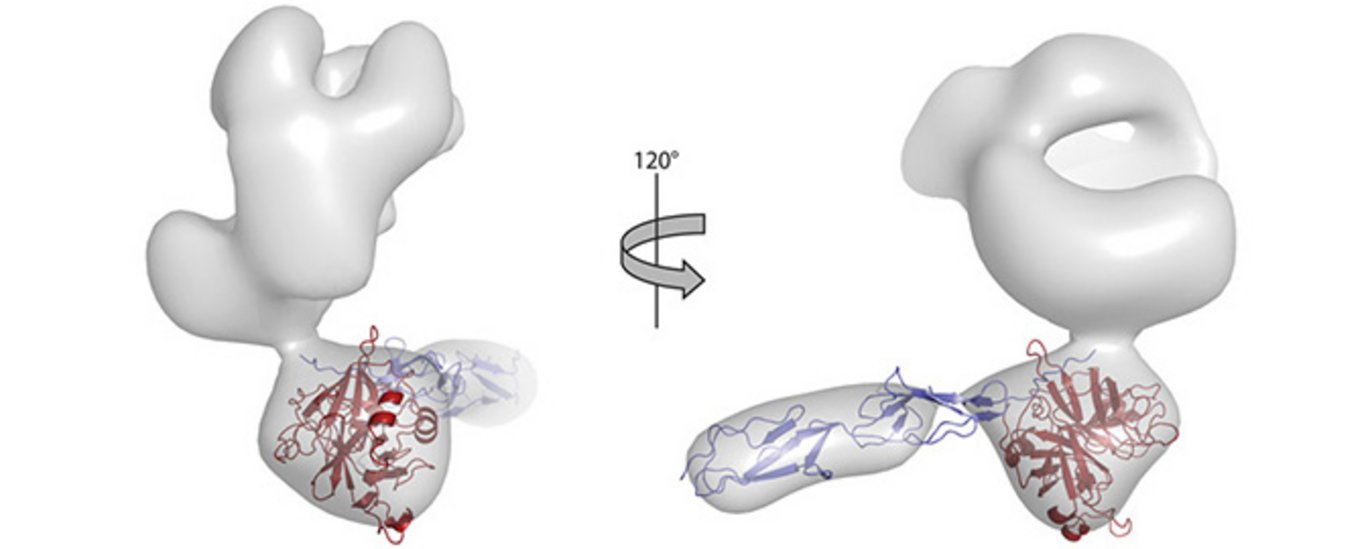An interdisciplinary research team from Denmark discovers new control mechanism in the innate immune system
Although the protein ITIH4 is found in large amounts in the blood, its function has so far been unknown. By combining many different techniques, researchers from Aarhus University have discovered that ITIH4 inhibits proteases in the innate immune system via an unknown mechanism. The research results have just been published in the prestigious scientific journal <em>Science Advances</em>.

Proteases are enzymes that cleave other proteins. Most often, proteases occur in cascade networks, where a particular event triggers a chain reaction in which several proteases cleave and thereby activate each other. Most well known is probably the coagulation cascade, which causes clotting of our blood when a vessel is punctured.
But a similar network of proteases called the complement system is found in our blood and tissues. Activation of the complement system leads to the elimination of disease-causing organisms, cancer cells, and our own dying cells. To prevent the complement system from attacking our healthy cells, it is kept under close control by proteins which inactivate the proteases after a short time; these control proteins are called protease inhibitors.
At the Department of Biomedicine at Aarhus University, Professor Steffen Thiel and PhD student Rasmus Pihl wanted to investigate which other proteins in our blood the so-called MASP proteases from the complement cascade interact with. With the help of the mass spectrometry group at the Department of Molecular Biology and Genetics at Aarhus University, led by Professor Jan J. Enghild, they found to their surprise that two MASP proteases formed a strong complex with the ITIH4 protein.
ITIH4 forms a complex with the MASP-1 and MASP-2 enzymes
“I was highly surprised when I saw the first data from our partners, showing that ITIH4 could form a complex with the MASP-1 and MASP-2 enzymes. At Biomedicine, we have been studying these two proteases for 25 years, and ITIH4 has simply never been on the radar. But it made good sense, as proteins similar to ITIH4 act as inhibitors of other proteases,” says Rasmus Pihl.
Rasmus and Steffen now began a systematic study of how ITIH4 affects MASP-1 and MASP-2. It turned out that when ITIH4 formed a complex with the MASP-1 and MASP-2 enzymes, these could still cleave small proteins, while large proteins could not be cleaved when ITIH4 inhibited MASP-1 and MASP-2.
Their colleagues Jan J. Enghild and Gregers R. Andersen at the Department of Molecular Biology and Genetics nearly fell out of their chair when they learned about their discovery.
Since the 1980s, researchers at the department have characterized another protease inhibitor called A2M exactly with this property. Had their colleagues at Biomedicine now discover that ITIH4 functions similar to A2M?
To characterize in detail how ITIH4 inhibits the MASP proteases, Rasmus Pihl isolated both free ITIH4 and ITIH4 bound to the MASP-1 protease. By the use of X-ray small-angle scattering and electron microscopy, these samples were studied by postdoc Rasmus Kjeldsen Jensen and Professor Gregers Rom Andersen at Molecular Biology and Genetics. They showed that ITIH4 makes contact with the MASP-1 protease via a so-called von Willebrand domain, which matched nicely with the results from the Department of Biomedicine. This is a completely new mechanism for inhibiting proteases, and entirely different from the way A2M inhibits proteases.
“There is very little knowledge about ITIH4, but it is known that under various pathological conditions, the protein can be cleaved. Our results show that such a cleavage is absolutely necessary for the way ITIH4 can function as an enzyme inhibitor,” explains Professor Steffen Thiel.”
Gregers Rom Andersen explains: “By using cryo-electron microscopy, we now try to understand in detail how ITIH4 inhibits MASP-1 and MASP-2 via this new inhibition mechanism. We already know that when ITIH4 is cleaved, it forms a complex with both MASP-1 and another ITIH4 molecule. We are very excited to see how it takes place.”
At one point, Winston Churchill expressed: “Men occasionally stumble over the truth, but most of them pick themselves up and hurry off as if nothing ever happened. “As a researcher, it is absolutely necessary to maintain curiosity. It is deeply fascinating to work with proteins and mechanisms that are completely new and undescribed. This also means that we do not know where we end up in terms of describing whether ITIH4 has a significance in connection with clinical situations,” says Steffen Thiel.
The new results have led to a grant from the Novo Nordisk Foundation to continue the collaboration between the two departments.
The research article was published in the scientific journal Science Advances:
ITIH4 acts as a protease inhibitor by a novel inhibitory mechanism
Rasmus Pihl, Rasmus K. Jensen, C. Poulsen, Lisbeth Jensen, Annette G. Hansen, Ida B. Thøgersen, József Dobó, Péter Gál, Gregers R. Andersen, Jan J. Enghild and Steffen Thiel
For further information, please contact
Professor Steffen Thiel
Department of Biomedicine, Aarhus University, Denmark
st@biomed.au.dk - +45 2927 0890
Professor Gregers Rom Andersen
Department of Molecular Biology and Genetics, Aarhus University, Denmark
gra@mbg.au.dk - +45 30256646
